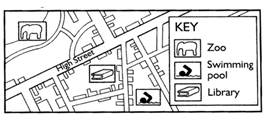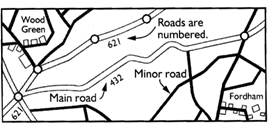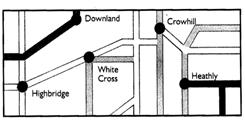题目内容
Last summer, Jeff became a middle school student. He was a good student, and he always worked hard. He had a test in the first month and he finished the questions easily until he read the last one:”小题1: What’s her name?”
Of course, this question was a little special. 小题2:She was tall and her hair was dark. But Jeff didn’t talk with her and didn’t know her name. The test was over. 小题3: Then a student asked the teacher, “Is the last question very important in this test?”
“Yes,” said the teacher. “In our life, we will meet many hard-working people. They are important. 小题4: We may smile at them or say hello to them.
小题5: He also learned that woman’s name later. It was Kathy.
根据材料内容,从下面五个选项中选出能填入文中空缺处的最佳选项,使短文意思通顺,内容完整,并将其标号填写在下面题号后的横线上。
Of course, this question was a little special. 小题2:She was tall and her hair was dark. But Jeff didn’t talk with her and didn’t know her name. The test was over. 小题3: Then a student asked the teacher, “Is the last question very important in this test?”
“Yes,” said the teacher. “In our life, we will meet many hard-working people. They are important. 小题4: We may smile at them or say hello to them.
小题5: He also learned that woman’s name later. It was Kathy.
根据材料内容,从下面五个选项中选出能填入文中空缺处的最佳选项,使短文意思通顺,内容完整,并将其标号填写在下面题号后的横线上。

小题1:D
小题2:C
小题3:A
小题4:E
小题5:B
试题分析: 本篇阅读是一名学生在考试的过程中有一道关于学校清洁的问题。问这个清洁工的姓名,杰夫在读到这道题时感受很多,平时也多次见到她,并且能描述形象,但是并没有去打招呼。学生们交卷之后,都说这道问题是最有意义的,平日要更多的关注那些努力工作的人们。
小题1:细节理解题。第一选项是在完成后面四个选项之后就容易发现,本次考试的特殊点是关于学校的一名清洁工的问题。从学校的每天都更干净谈起。故选D。
小题2:细节理解题。联系下文:She was tall and her hair was dark. But Jeff didn’t talk with her and didn’t know her name.句意:她个子高高的,她的头发是黑的。但杰夫没有跟她交谈过,也不知道她的名字。从中得知他有时看过她。故选C。
小题3:细节理解题。联系前句,考试结束了。后面是学生问老师问题。那么中间的动作就是学生交卷。故选A。
小题4:细节理解题。联系下文:We may smile at them or say hello to them. 句意:我们可以微笑的看着他们或者向他们问好。只有我们去关注了他们,才能做到这一点,故选E。
小题5:细节理解题。分析全文学生在答题的过程中受到了启迪,对于学生来说一定会永远记住这个问题的,故选B。

练习册系列答案
相关题目




